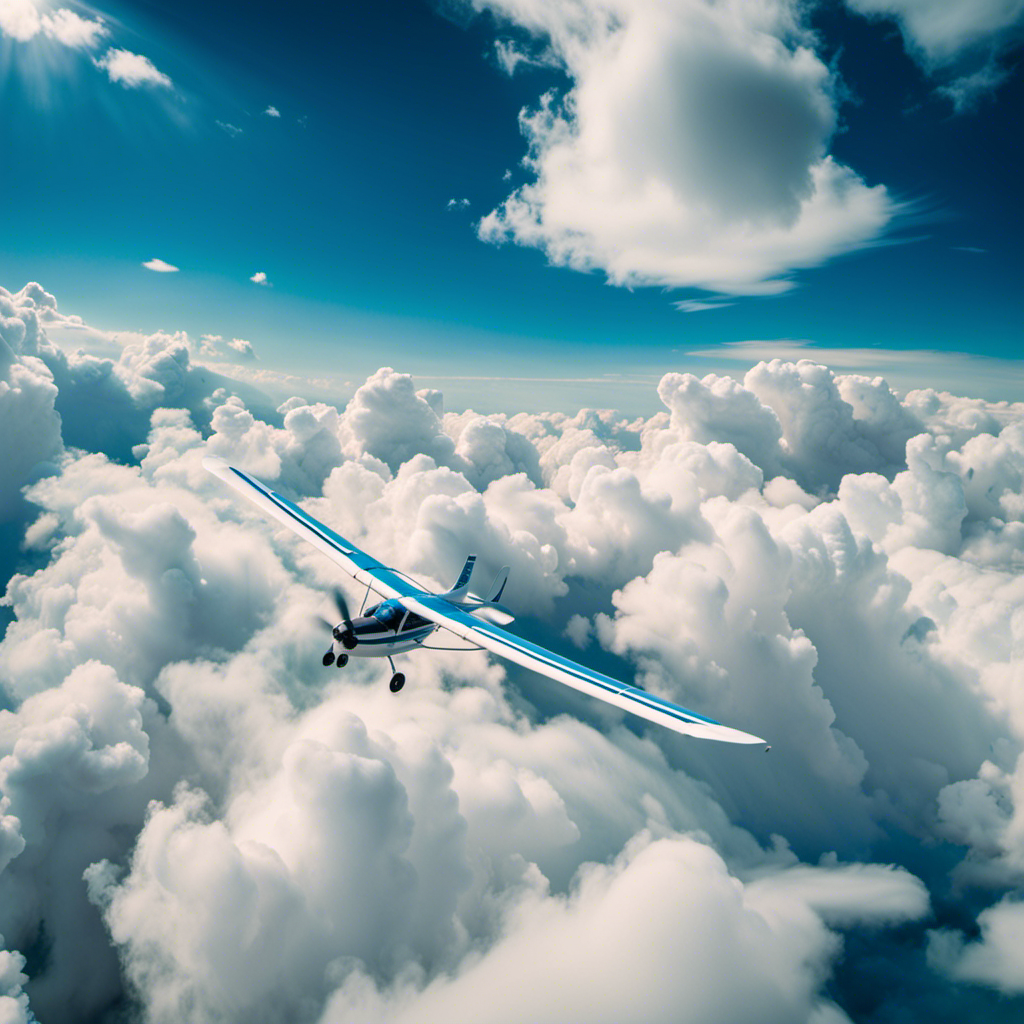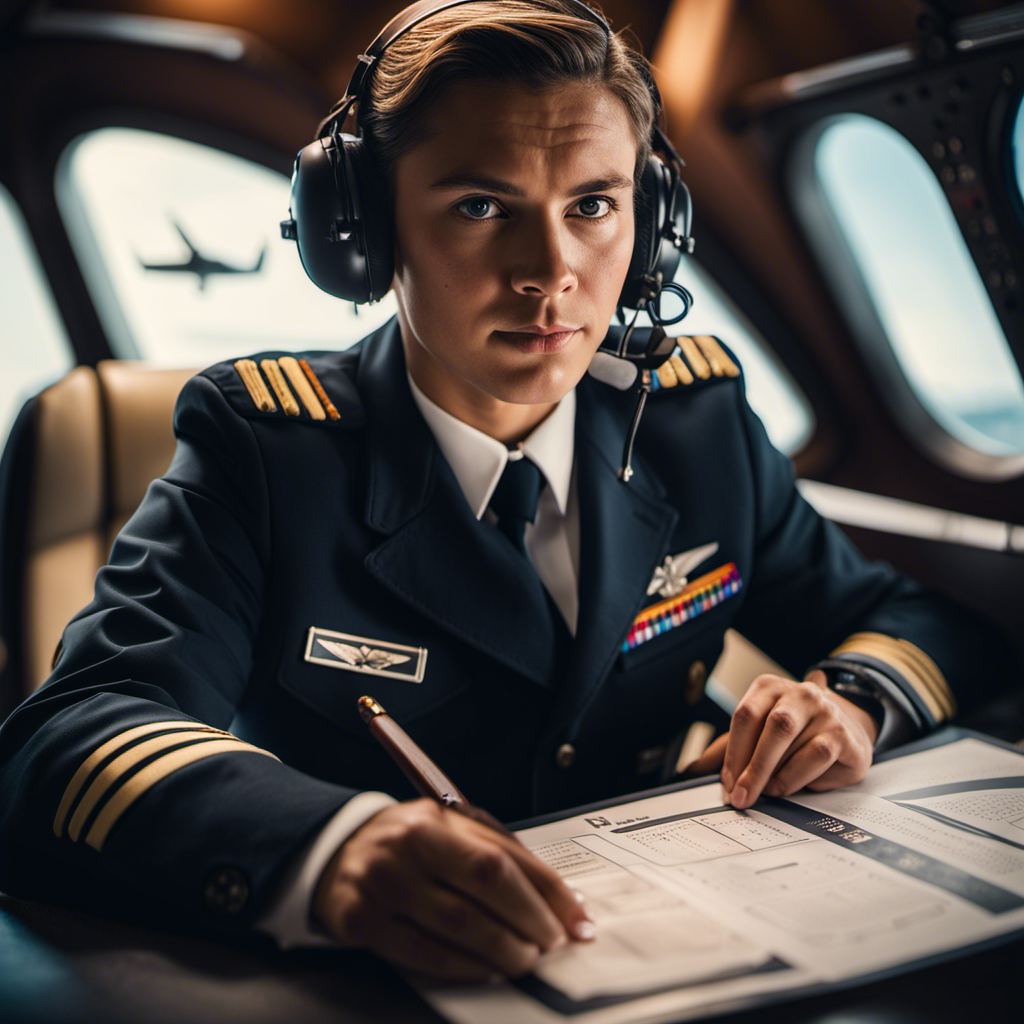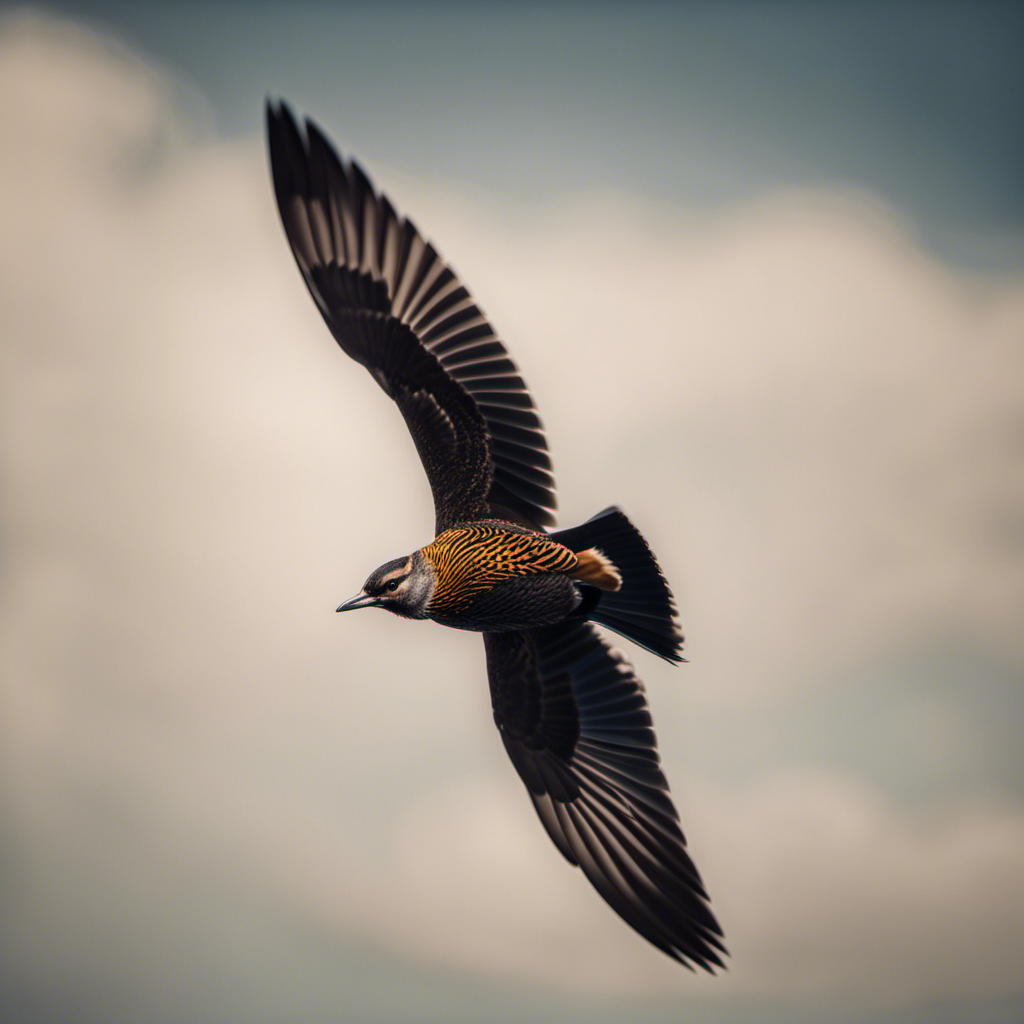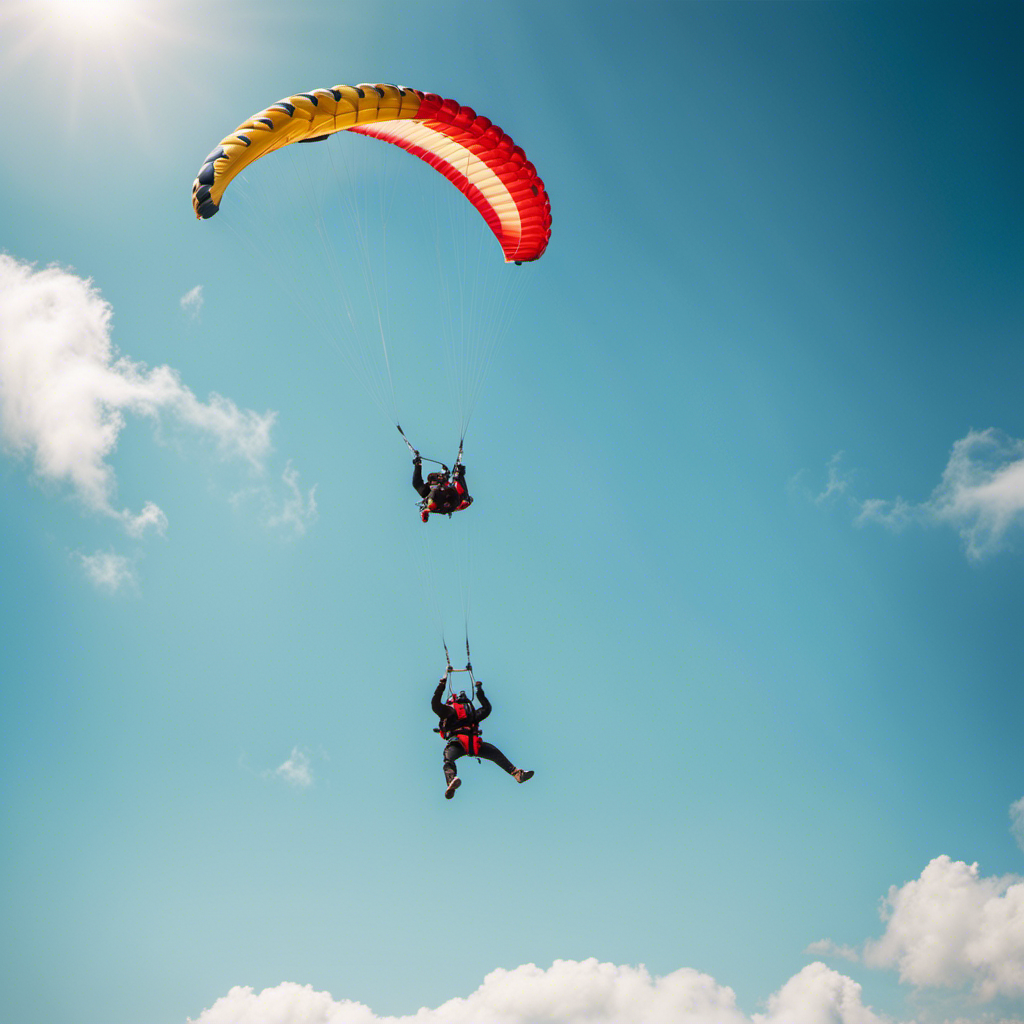I vividly recall my first time flying through the sky in a glider, my heart filled with excitement and anticipation. The sensation of weightlessness, the breeze against my face, it was a truly unparalleled experience.
If you’ve ever dreamed of flying, of defying gravity and embracing the freedom of the open sky, then this article is for you. Join me as we embark on a journey to discover the exhilarating world of glider flying, where the sky becomes our playground and the lessons we learn will lift us to new heights.
Key Takeaways
- Lift and drag are fundamental principles in glider flying.
- Understanding and practicing with glider equipment builds confidence.
- Different launch methods and landing procedures require precision and skill.
- Weight shifting and navigation skills are crucial for smooth and safe glider flight.
Understanding the Basics of Aerodynamics
To understand the basics of aerodynamics, you’ll need to grasp concepts like lift and drag. These are fundamental principles that govern the movement of objects in the air.
Lift is the force that allows an aircraft to stay aloft, and it is generated by the difference in air pressure between the upper and lower surfaces of the wings.
Drag, on the other hand, is the resistance that opposes the motion of the aircraft through the air. It is caused by factors such as air friction and the shape of the aircraft.
Understanding lift and drag is crucial in glider flying, as it helps pilots optimize their flight performance.
Now that we have a grasp on aerodynamics, let’s move on to getting familiar with glider equipment.
Getting Familiar with Glider Equipment
Before you begin your glider flying journey, it’s important to get familiar with the equipment. As a pilot, understanding and being comfortable with the glider’s equipment is crucial for a safe and enjoyable flight.
The first thing you’ll notice is the cockpit, where you’ll find the controls such as the stick, rudder pedals, and instruments like the airspeed indicator and altimeter. It’s important to know how to use these controls effectively to maneuver the glider.
Additionally, you’ll need to become familiar with the parachute system, which is an essential safety feature in case of an emergency. By understanding and practicing with the equipment, you’ll gain confidence and be better prepared for learning to launch and land, which we’ll explore in the next section.
Learning to Launch and Land
When it comes to launching and landing a glider, there are various methods, approaches, and safety procedures to consider.
Different launch methods include aerotow, winch launch, and self-launch, each with its own advantages and considerations.
Approaches and landings are crucial aspects of glider flying, requiring precision and skill to execute smoothly.
Safety procedures, such as pre-flight checks, emergency protocols, and communication protocols, are essential to ensure a safe and successful flight.
In this discussion, we will explore these key points in detail, providing valuable insights for aspiring glider pilots.
Different Launch Methods
Once you’ve mastered the basics of glider flying, you can explore different launch methods such as aerotow and winch launches.
Aerotow launches involve being connected to a powered aircraft that tows you into the air. As you gain altitude, the glider is released and you continue on your own. This method allows for longer flights and greater altitude.
On the other hand, winch launches involve a cable attached to a winch on the ground. As the winch quickly pulls in the cable, the glider accelerates and takes off. This method provides a more thrilling and dynamic launch experience.
Both methods require precise coordination and communication with the ground crew. Mastering these launch techniques will prepare you for the next crucial phase of glider flight: approaches and landings.
Approaches and Landings
To successfully execute approaches and landings, you’ll need to maintain proper speed and glide angle. As I bring my glider in for landing, I focus on maintaining a consistent descent rate and a steady airspeed. I carefully adjust the controls to control my glide angle, making sure not to descend too steeply or too shallowly. By keeping a close eye on my airspeed indicator, I ensure that I am flying at the appropriate speed for a safe landing.
As I approach the landing zone, I prepare to flare, gently pulling back on the control stick to reduce my rate of descent. This allows the glider to touch down smoothly on the runway. Mastering approaches and landings is crucial for safe and successful glider flying.
Transitioning to the next section, safety procedures are an essential part of every flight.
Safety Procedures
Remember, it’s important to familiarize yourself with the safety procedures that are in place before each flight.
As a glider pilot, safety should always be your top priority. Before taking off, you should conduct a thorough pre-flight inspection of the aircraft, checking for any signs of damage or malfunction.
Once on board, make sure to fasten your seatbelt securely and ensure that all passengers are properly restrained as well. It’s crucial to listen to the pilot briefing, paying close attention to emergency procedures and the location of emergency equipment.
Additionally, be aware of the weather conditions and any potential hazards in the vicinity.
Mastering Glider Flight Maneuvers
Understanding the importance of weight shifting is key to mastering glider flight maneuvers. When flying a glider, your body becomes an essential control surface. Here are some key points to consider:
-
Proper weight shifting allows for smooth turns: By shifting your weight in the direction you want to turn, you can control the glider’s bank angle and maintain coordinated flight.
-
Balancing the glider pitch: By shifting your weight forward or backward, you can control the glider’s pitch, allowing for climbing, descending, or maintaining level flight.
-
Maintaining stability during turbulence: By actively shifting your weight to counteract the effects of turbulence, you can maintain stability and prevent the glider from being thrown off course.
Developing a good understanding of weight shifting and practicing these techniques will lay a solid foundation for developing navigation skills in glider flying. With a firm grasp of weight shifting, you will be better equipped to navigate the skies with confidence.
Developing Navigation Skills
When it comes to developing navigation skills in aviation, there are three key points that are crucial to understand: reading aeronautical charts, understanding airspace regulations, and planning cross-country flights.
Reading aeronautical charts is essential for pilots to navigate safely and efficiently.
Understanding airspace regulations is important for maintaining proper separation and compliance with regulations.
Lastly, planning cross-country flights involves considering factors such as weather, fuel consumption, and navigation aids to ensure a successful and enjoyable journey.
Reading Aeronautical Charts
Reading aeronautical charts helps pilots navigate through the sky. These charts provide crucial information about the terrain, airspace, and navigation aids. As a pilot, I rely on aeronautical charts to plan my flights and ensure a safe and efficient journey. Let me share with you a glimpse of what these charts look like and the valuable information they provide.
| Information | Importance |
|---|---|
| Topography | Helps identify potential obstacles and terrain |
| Airports and Landing Strips | Facilitates planning for takeoff and landing |
| Airspace Boundaries | Ensures compliance with regulations |
| Navigation Aids | Assists in route planning and navigation |
| Communication Frequencies and Call Signs | Enables effective radio communication |
Understanding Airspace Regulations
To navigate through the skies safely, you need to familiarize yourself with airspace regulations. These regulations are crucial for all pilots to understand, as they dictate where and how we can fly.
Airspace is divided into different classes, each with its own set of rules and restrictions. Class A airspace, for example, is reserved for commercial airlines and requires instrument flight rules. On the other hand, Class G airspace is less regulated and often found in rural areas.
It’s important to know the boundaries and requirements of each airspace class to ensure compliance and avoid potential conflicts. Understanding airspace regulations is a vital aspect of becoming a skilled and responsible pilot.
When planning cross-country flights, you’ll need to consider various factors such as weather conditions, navigation aids, and airport facilities.
Planning Cross-Country Flights
Planning cross-country flights involves considering factors such as weather, navigation aids, and airport facilities.
As a pilot, I rely on accurate weather forecasts to determine the best time to depart and avoid adverse conditions. I also rely on navigation aids, such as GPS and VORs, to plot my course and ensure I stay on track.
Airport facilities are crucial for refueling, rest, and maintenance along my journey.
But planning alone is not enough to ensure a safe flight. Enhancing safety and emergency procedures is paramount. From conducting pre-flight inspections to familiarizing myself with emergency protocols, I am always prepared for the unexpected.
Enhancing Safety and Emergency Procedures
Make sure you’re familiar with the safety guidelines and emergency procedures to enhance your glider flying journey. Here are some key points to keep in mind:
-
Pre-flight inspection: Before every flight, thoroughly inspect your glider for any signs of damage or malfunction. Check the control surfaces, cables, and instruments to ensure everything is in proper working order.
-
Emergency procedures: Familiarize yourself with the emergency procedures specific to your glider. This includes knowing how to handle situations such as an in-flight emergency, loss of control, or unexpected weather changes.
-
Communication protocols: Understand the communication protocols used in glider flying, such as radio frequencies and hand signals. Clear communication is vital for ensuring the safety of yourself and others in the airspace.
-
Risk assessment: Continuously assess the risks involved in your flight. Consider factors such as weather conditions, airspace restrictions, and your own skill level. Always prioritize safety over anything else.
Progressing to Solo Flights
Now that you’ve familiarized yourself with the safety guidelines and emergency procedures, it’s time to take the next step and progress to solo flights.
This is an exciting milestone in your glider flying journey, as it allows you to take full control of the aircraft and soar through the skies on your own.
Before embarking on solo flights, it’s important to review and master the skills you’ve learned during your training sessions. This includes understanding the principles of flight, practicing takeoffs and landings, and honing your ability to navigate through different weather conditions.
Once you feel confident in your abilities, it’s time to join a glider club or community. This will not only provide you with access to gliders and facilities, but also a supportive network of experienced pilots who can offer guidance and mentorship as you continue to grow as a glider pilot.
Joining a Glider Club or Community
Joining a glider club or community is a great way to connect with experienced pilots and gain access to resources and facilities. Here are three reasons why it’s worth considering:
-
Networking: Being part of a glider club allows you to meet and learn from experienced pilots who have a wealth of knowledge to share. They can offer guidance, tips, and even mentorship, helping you improve your skills and confidence in the air.
-
Access to Resources: Glider clubs often have a wide range of resources available, such as training materials, flight simulators, and maintenance facilities. These resources can greatly enhance your learning experience and provide opportunities for hands-on practice and maintenance.
-
Community Support: Being part of a glider club means being part of a supportive community of like-minded individuals who share your passion for flying. The camaraderie and encouragement you’ll find can make your journey more enjoyable and rewarding.
Continuing Education and Advanced Training
When it comes to continuing my education and advancing my skills in glider flying, there are several exciting opportunities to explore.
Pursuing advanced certifications allows me to expand my knowledge and expertise in specific areas, such as aerobatics or glider racing.
Participating in aerobatic training not only adds an element of thrill and excitement to my flying experience, but also enhances my precision and control in the air.
Lastly, exploring glider racing opens up a whole new world of competitive flying, where I can test my skills against other pilots and push myself to new limits.
These avenues of growth and development in the world of glider flying are not only challenging but also immensely rewarding.
Pursuing Advanced Certifications
If you’re passionate about glider flying, you can pursue advanced certifications to further enhance your skills. These certifications are designed to push your limits and expand your knowledge in various aspects of glider flying.
One such certification is the Cross-Country Endorsement, which allows you to fly longer distances and explore new territories. Another option is the Aerobatic Endorsement, which enables you to perform thrilling maneuvers in the sky.
By obtaining these advanced certifications, you can challenge yourself and take your glider flying abilities to new heights. These certifications not only provide you with a sense of accomplishment but also open up new opportunities for exciting adventures in the world of glider flying.
Now, let’s dive into the exhilarating world of participating in aerobatic training.
Participating in Aerobatic Training
Get ready to experience the thrill of performing exhilarating aerobatic maneuvers in the sky as you participate in aerobatic training.
As a pilot, there is nothing quite like the feeling of defying gravity and pushing the limits of your aircraft. Aerobatic training allows you to master precision flying, learn advanced maneuvers like loops, rolls, and spins, and develop a deep understanding of your aircraft’s capabilities. It is a challenging and exciting journey that will test your skills and build your confidence as a pilot.
Once you have honed your aerobatic skills, you can take your flying adventures to new heights by exploring the world of glider racing. Glider racing combines the thrill of competition with the beauty of soaring through the sky, and it is a fantastic way to continue your flying journey.
Exploring Glider Racing
Exploring glider racing is an exhilarating way to combine competition and the beauty of soaring through the sky. As someone who has been a part of this thrilling sport, I can attest to the incredible experience it offers. Here are four reasons why glider racing is a must-try activity:
-
Adrenaline Rush: The intense nature of racing against other gliders at high speeds creates an adrenaline rush like no other. The exhilaration of maneuvering through the air, relying solely on the forces of nature, is truly unforgettable.
-
Strategic Thinking: Glider racing requires strategic planning and decision-making. Analyzing weather conditions, choosing the best routes, and optimizing energy management are crucial aspects that add an intellectual challenge to the sport.
-
Camaraderie: The glider racing community is a tight-knit group of passionate individuals who share a love for the sport. Engaging with fellow pilots, exchanging knowledge and experiences, and celebrating victories together create a sense of camaraderie that is second to none.
-
Unparalleled Views: Racing in a glider provides breathtaking views of the surrounding landscape. The sensation of being suspended in the sky, with vast expanses stretching out below, is a visual feast that cannot be replicated.
Embracing the Joy of Glider Flying
When it comes to glider flying, there are three key points that I find truly captivating: appreciating the beauty of soaring, sharing experiences with fellow pilots, and continuing to learn and grow in the sport.
There is something truly awe-inspiring about being up in the sky, feeling the wind beneath your wings and witnessing the breathtaking views below. It’s a feeling that words can’t fully capture, but one that must be experienced firsthand.
And what makes it even more special is being able to share these incredible moments with fellow pilots who understand the thrill and joy that glider flying brings.
Finally, the sport of glider flying offers endless opportunities for learning and growth. Whether it’s mastering new techniques, exploring different locations, or pushing your own limits, there’s always something new to discover and strive for.
Appreciating the Beauty of Soaring
I’m amazed by the breathtaking views as I glide through the sky. The beauty of soaring is truly unparalleled. From up above, I can see the world in a whole new perspective. The vast expanse of the sky seems infinite, and the earth below reveals its intricate details. As I navigate through the air currents, I can spot mountains, rivers, and lush green landscapes. It’s like being in a real-life painting. To give you an idea of what I see, here’s a glimpse into my view from the cockpit:
| 🌤️ | ⛰️ | 🌳 |
| 🕊️ | 🌊 | 🌺 |
| 🦅 | 🏞️ | 🌄 |
Sharing these experiences with fellow pilots is a privilege. Being able to discuss these awe-inspiring moments, exchange tips, and learn from each other’s flights is an integral part of the glider flying community.
Sharing Experiences with Fellow Pilots
Joining a community of fellow pilots allows you to share your experiences and learn from others who have taken to the skies. It’s an incredible opportunity to connect with individuals who share the same passion and enthusiasm for glider flying. Here are three reasons why sharing experiences with fellow pilots is invaluable:
-
Knowledge Exchange: Engaging with other pilots gives you the chance to learn from their successes and challenges. You can exchange tips, techniques, and strategies that can enhance your skills and improve your understanding of glider flying.
-
Support and Encouragement: Being part of a community provides a support system that understands the unique challenges of the sport. Fellow pilots can offer guidance, encouragement, and motivation during both exhilarating moments and difficult times.
-
Building Lifelong Friendships: Through shared experiences, you can forge deep connections with fellow pilots. These friendships can extend beyond the flying field, creating a network of like-minded individuals who share your love for glider flying.
Continuing to Learn and Grow in the Sport
As a member of the pilot community, you can keep expanding your knowledge and skills to further develop your expertise in the sport.
Glider flying is a continuous learning process, and there are many avenues available to help you continue to learn and grow.
One of the best ways to expand your knowledge is by taking advanced flying courses. These courses offer specialized training in areas such as cross-country flying, aerobatics, or advanced maneuvers.
Additionally, attending glider flying seminars and workshops can provide valuable insights from experienced pilots and industry experts.
Another great way to enhance your skills is by participating in competitions and challenges. These events not only push your boundaries but also allow you to learn from other skilled pilots.
Frequently Asked Questions
Are there any age restrictions for learning to fly a glider?
Yes, there are age restrictions for learning to fly a glider. The minimum age varies depending on the country and the specific regulations. It’s important to check with your local aviation authority for the exact requirements.
What types of medical conditions may disqualify someone from being able to fly a glider?
Certain medical conditions, such as uncontrolled epilepsy, significant heart conditions, and certain mental health disorders, may disqualify someone from flying a glider. It’s important to consult with a medical professional before pursuing glider flying.
Can I fly a glider if I wear glasses or contact lenses?
Yes, you can fly a glider if you wear glasses or contact lenses. They help correct your vision and ensure clear sight during your flight, allowing you to fully enjoy the breathtaking experience of gliding through the sky.
How long does it typically take to become a proficient glider pilot?
Becoming a proficient glider pilot typically takes several months of dedicated training and practice. It’s important to commit to regular lessons and put in the necessary hours of flight time to gain the skills and experience needed for proficiency.
Are there any weight restrictions for flying a glider?
Yes, there are weight restrictions for flying a glider. The maximum weight limit varies depending on the specific glider, but it is important to adhere to these restrictions for safety reasons.
Conclusion
Wow, what an incredible journey it has been! From understanding the basics of aerodynamics to mastering glider flight maneuvers, I have truly soared to new heights.
The thrill of launching and landing, the adrenaline rush of solo flights, and the camaraderie of being part of a glider club have all made this experience unforgettable.
But it doesn’t stop here. Continuing education and advanced training will keep pushing me to new limits. Glider flying has not just become a hobby, but a passion that brings me pure joy.
So, if you’re ready to embrace the skyward adventures, buckle up and get ready for the ride of a lifetime!
Orion, better known as “Jetstream,” is the voice that brings the stories of the skies to life. His fascination with aviation began at a young age, sparked by his father’s tales of flying and adventure. Orion’s journey into the world of gliding was serendipitous, and from the moment he took his first glider flight, he knew he had found his calling.










